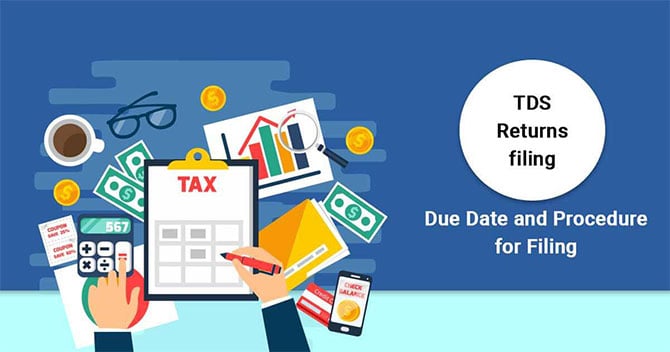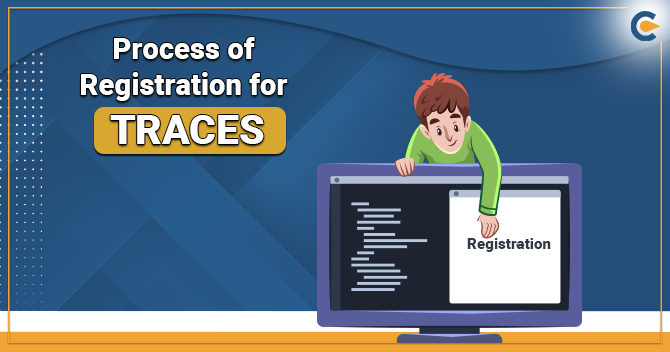The full form of TDS is Tax Deducted at Source, i.e. tax deducted by assesses like employers, contractors promoters or any other person making any payment to any other person. TDS Returns Filing is compulsory for everyone making any payment to its employees, freelancers, etc. This article covers all the aspects of TDS returns filing like its procedure, its due date, forms used to file it etc.
All about TDS Returns Filing
There is a difference between TDS, TDS Return and TDS Return filing; But most people get confused between these three. Therefore, I have come up with the perfect definition of these three terms, which I hope will be able to end your confusion.
What is TDS?
TDS full form is Tax Deducted at Source, are the means of collecting Income Tax in India. TDS is deducted under the Income Tax Act, 1961. As per the provision of TDS, any payment covered is paid after deducting the amount as per the prescribed percentage. It is managed under the Department of Revenue controlled by the Indian Revenue Service which is the part of the Central Board of Direct Taxes or CBDT. TDS is extremely important while conducting audits.
What is TDS Returns?
The Assessee also need to file quarterly returns to the CBDT namely, TDS Return. Furthermore, the return should contain the details of the TDS deducted and the amount paid to the government during the quarter for which it is being filed.
Read our article:All about Benefits of TDS Return Filing in India
What is TDS Return filing?
The process of filing the returns of the Tax Deducted at Source or TDS Returns is known as TDS Returns Filing.
Benefits of TDS
Some of the advantages of TDS are the following;
- It helps in collecting taxes on a regular basis
- Also, it ensures a flow of regular income to the government
- It reduces the burden of lump-sum tax payment at a time. It helps in distributing the entire tax payment over a number of months which makes it easier for the taxpayer
- And finally, it offers an easy mode of tax payment to the payer
What is the eligibility criterion for TDS Return filing?
TDS returns can be filed by employers or organizations that avail a valid (TAN) Tax Collection and Deduction Account Number. Furthermore, any person making specified payments mentioned under the Income Tax Act has to deduct tax at source and needs to deposit within the predetermined time for the following type of payments;
- Payment of the Salary
- Any income by way of “Income on Securities.”
- Income by way of winning lottery, puzzles and any others
- Earnings from winning horse races
- Commissions from selling Insurance
- Any payment in respect of National Saving Scheme, etc.
Requirements for Filing TDS
The requirement for filing TDS has to comply with the following criteria:
- The person must possess a TAN which is registered for filing TDS online.
- Prepare TDS statement by means of RPU (Return Preparation Utility).
- Validation of the TDS statement using the FVU (File Validation Utility).
- Possess a valid Digital Signature (DSC) that is registered for e-filing.
- Provide with the Details of the Bank Account of Principal Contact.
- Ensure the linking of the Aadhaar card with the PAN card for uploading returns via EVC.
Due dates of TDS Return Filing
The due dates for filing the TDS Return is as follows;
| Sr. No. | Quarter | Quarter period | Due date |
| 1 | 1st Quarter | 1st April – 30th June | 31st March |
| 2 | 2nd Quarter | 1st July – 30th September | 31st March |
| 3 | 3rd Quarter | 1st October – 31st December | 31st January |
| 4 | 4th Quarter | 1st January – 31st March | 31st May |
Forms used to file TDS Returns
The forms used to file TDS returns are as follows;
| Sr. No. | Form no. | Remarks |
| 1 | Form 24Q | TDS on Salary |
| 2 | Form 27Q | TDS where the deductee is a non-resident or foreign company |
| 3 | Form 26QB | TDS on payment for the transfer of immovable property |
| 4 | Form 26Q | TDS in any other case |
TDS Return Filing Procedure
The process involved in the filing of TDS Return is as follows;
- You need to fill all columns of Form 27A which contains a control chart. Then, this form is verified in hard copy form with the TDS return filed electronically.
- Furthermore, you need to fill three details of the total amount paid carefully and the tax deducted at source in all the forms, including Form No. 24, Form No. 26, Form No. 27 and Form No. 27A.
- The assessees need to mention their (TAN) Tax Deduction Account Number in Form No. 27A. Moreover, this is similar to what is done in case of e-TDS return. It is dictated under ‘sub-section (2) of section 203A of the Income Tax Act in India[1].
- Also, at the time of filing the TDS return, make sure that the details relating to the depositing of tax deducted at source (TDS) have been mentioned accurately.
- Moreover, the basic form that has been used for e-TDS return recommended by the department is compulsory to follow. This is because it brings consistency and a better understanding of filling the forms. Additionally, it is necessary to mention the Bank Branch Code or the BSR code. It is a 7-digit code given to banks by the Reserve Bank of India (RBI).
- Furthermore, E-TDS return has to be filed in the ASCII clean text format. To avail this format, you can use the software of your choices such as MS Excel, Computex or Tally. Additionally, you have an option of using the software available at NSDL website known as (e-TDS RPU Light) Return Prepare Utility for filing the return online. Furthermore, it is compulsory to make sure that the online TDS file formats come with ‘txt’ as the filename extension.
- Also, the physical returns are submitted at any TIN-FC’s managed by NSDL. Furthermore, TIN-FC’s are found in particular areas across the country.
- In case if the returns are filed online, then they can be submitted directly at the NSDL TIN website. In such a case, the deductor needs to sign the return through digital signature.
- Finally, while submitting the return, if all the details mentioned are accurate, then a provisional receipt or token number will be issued. This provisional receipt or token number is considered as an acknowledgement, stating the fact that the return has been filed. However, in case, the return is not accepted, then a non-acceptance memo will be issued along with the reasons for rejections.
Penalty in case of late filing or non-filing of TDS Returns
It is mandatory to file TDS Returns quarterly, failing to do so may attract legal penalties. The punishment is different in case of a delay in filing, and in case there is a case of not- filing.
Penalty for delay in filing TDS Return
According to Section 234E of the Income Tax Act, 1961, if an assessee fails to file his/ her TDS Return before or within the due date, a penalty of Rs. Two hundred per day will be paid by the assessee for the time the default continues. However, the total penalty must not be more than the TDS amount.
Punishment for Non-filing of TDS Return
In case if an assessee has not filed the TDS return within one year from the due date of filing return. Additionally, in case if a person has provided incorrect information, he/she shall also be liable for a penalty. The penalty levied must not be less than Rs 10,000 but should not be more than Rs 1,00,000 under section 271 H
Conclusion
Deducting TDS is the method for collecting revenues by the government. They collect the revenue by deducting from various sectors and individuals so that they can run the government smoothly and work for the betterment of the country. Also, deducting TDS helps reduce the burden of paying taxes in a lump- sum amount because everyone or every entity cannot afford to file such a big amount at once
Read our article:Form 26Q: TDS Return filing for Non-Salary Deductions – Know the Online Procedure











